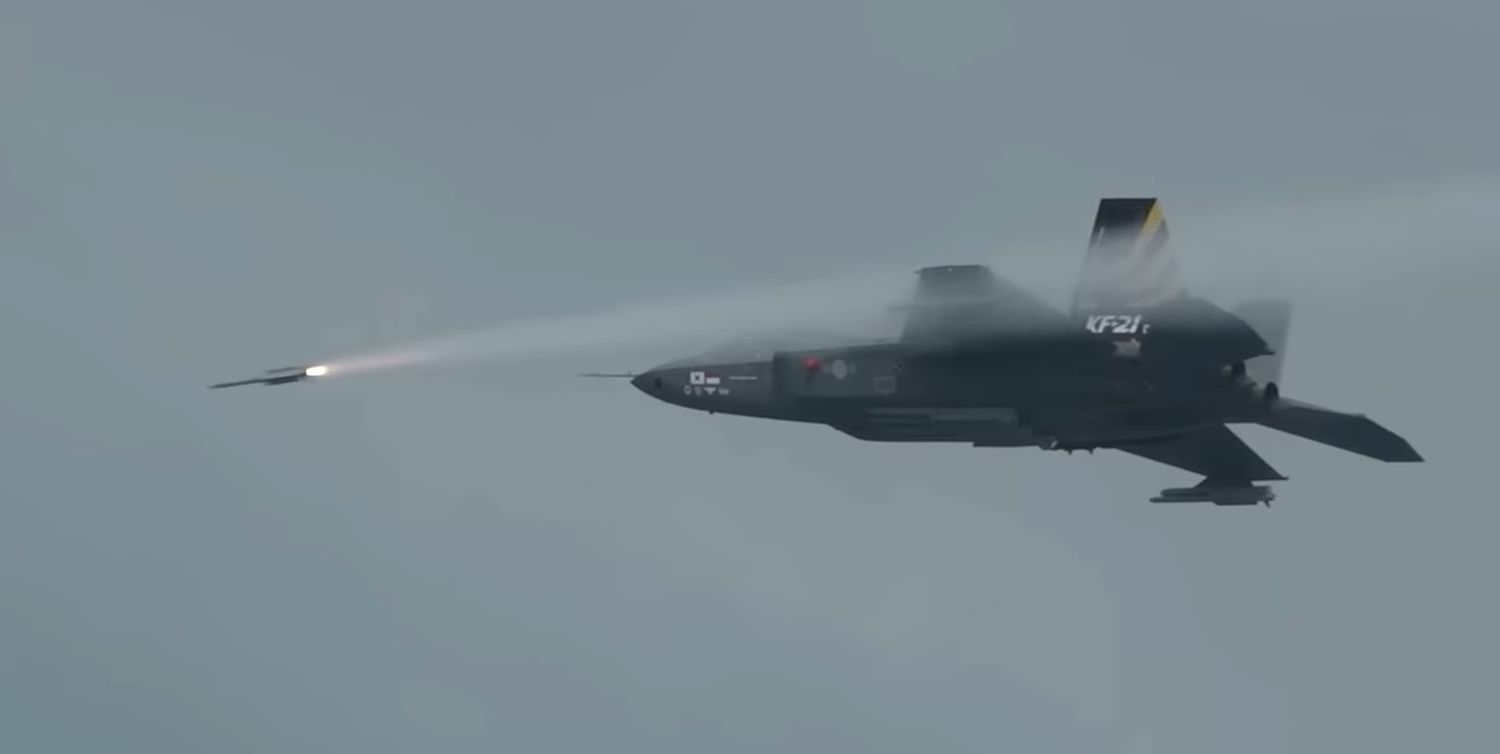South Korea unveiled the design for its new indigenously developed missile, the “Short-Range Air-to-Air Missile-II” (SRAAM-II), during the Defense Acquisition Program Administration (DAPA) conference on January 20.
This is the first public unveiling of the missile, which is set to be integrated into the KF-21 Boramae 4.5-generation fighter jet, according to the South Korean media outlet Biz Hankook.
The development of the missile, first announced in December 2023, is projected to cost approximately KRW 591.9 billion (USD 402.44 million).
The South Korean government has already completed a feasibility study on developing a new short-range air-to-air missile and has approved a plan to move forward with its development.
The report said that the program is set to commence with a tender announcement in March this year, with the contract anticipated to be finalized by early fall. The missile development program is scheduled to run from 2025 to 2035.
A DAPA spokesperson stated in December 2024 that project teams are currently identifying technologies relevant to the program and working to develop them into “core technologies.”
South Korea is actively pursuing multiple air-launched missile projects, including the development of a new long-range air-to-air missile (LRAAM).
However, the SRAAM-II program focuses on arming the Korea Aerospace Industries (KAI) KF-21 ‘Boramae’ 4.5-generation fighter jet with a short-range infrared (IR)-homing air-to-air missile.
The SRAAM-II is designed to match the performance and capabilities of advanced fifth-generation air-to-air guided missiles, such as the AIM-9X and IRIS-T.
DAPA said that the technologies will be developed for the SRAAM-II to ensure the missile possesses “all-round engagement capabilities and survival.”
Design Elements Of The New Missile
The newly unveiled missile combines features from the IRIS-T (AIM-2000) and LIG Nex1’s K-SAAM (Korean Surface-to-Air Anti-missile, Haegung) while adhering to the standard design of modern short-range air-to-air missiles.
The SRAAM-II missile shares the same connection interface as the AIM-2000 to ensure seamless integration with existing systems. The structure of the umbilical cable—used for exchanging target information and supplying power between the fighter jet and the missile—is identical, as is the coupling mechanism with pylons.
Designed to be compatible with NATO-standard aircraft, the SRAAM-II provides scalability that will allow easy integration not only into the KF-21 Boramae fighter jet but also into foreign-made fighter jets.
The report mentioned that one of the key innovations in the SRAAM-II missile is its use of two-stage Strake technology, derived from the Haegung missile.
This technology reduces air resistance while ensuring the missile retains lift, thereby providing improved aerodynamic performance. Furthermore, the missile’s tail rotor has been enlarged to increase its maneuverability, optimize airflow, and enable quicker, more agile turns during combat.

The missile’s infrared imaging seeker (IIR) has undergone substantial upgrades, with a reduction in size and enhanced performance, providing a resolution that is two to three times greater than that of rival models.
This improvement allows the missile to detect targets from greater distances and reduces the likelihood of being deceived by enemy countermeasures or decoy systems.
Another key feature of the SRAAM-II is its data link, which will help it to engage targets even if they are outside the seeker’s detection range or hidden behind the aircraft.
In addition, the rocket combustion tube has been upgraded from carbon composite to aluminum, enhancing the missile’s structural strength and allowing it to endure high g-forces, with anticipated high-mobility capabilities of at least 50G.
The missile will be integrated into the KF-21 fighter jet by 2032. The development plan is set to be finalized between August and September this year, with contracts expected to be signed with participating companies, including LIG Nex1 and Hanwha Aerospace.
Although the final contract details are still being negotiated, LIG Nex1 has already conducted thorough research on air-to-air missile technologies and will supply key components, including infrared detectors, which are expected to be sourced from i3Systems, South Korea’s exclusive producer of these essential components.
Currently, the KF-21 Boramae fighter jet is set to be equipped with two types of air-to-air missiles and one air-to-ground missile. Of these, only the air-to-surface missile is being developed domestically.
The air-to-air missiles, MBDA’s Meteor and Diehl’s AIM-2000, which the KF-21 will use in air combat with enemy aircraft, will be imported. However, the cost of these foreign missiles is expected to rise in the coming years, prompting South Korea’s defense industry to develop a domestic replacement.
- Contact the author at ashishmichel(at)gmail.com
- Follow EurAsian Times on Google News




